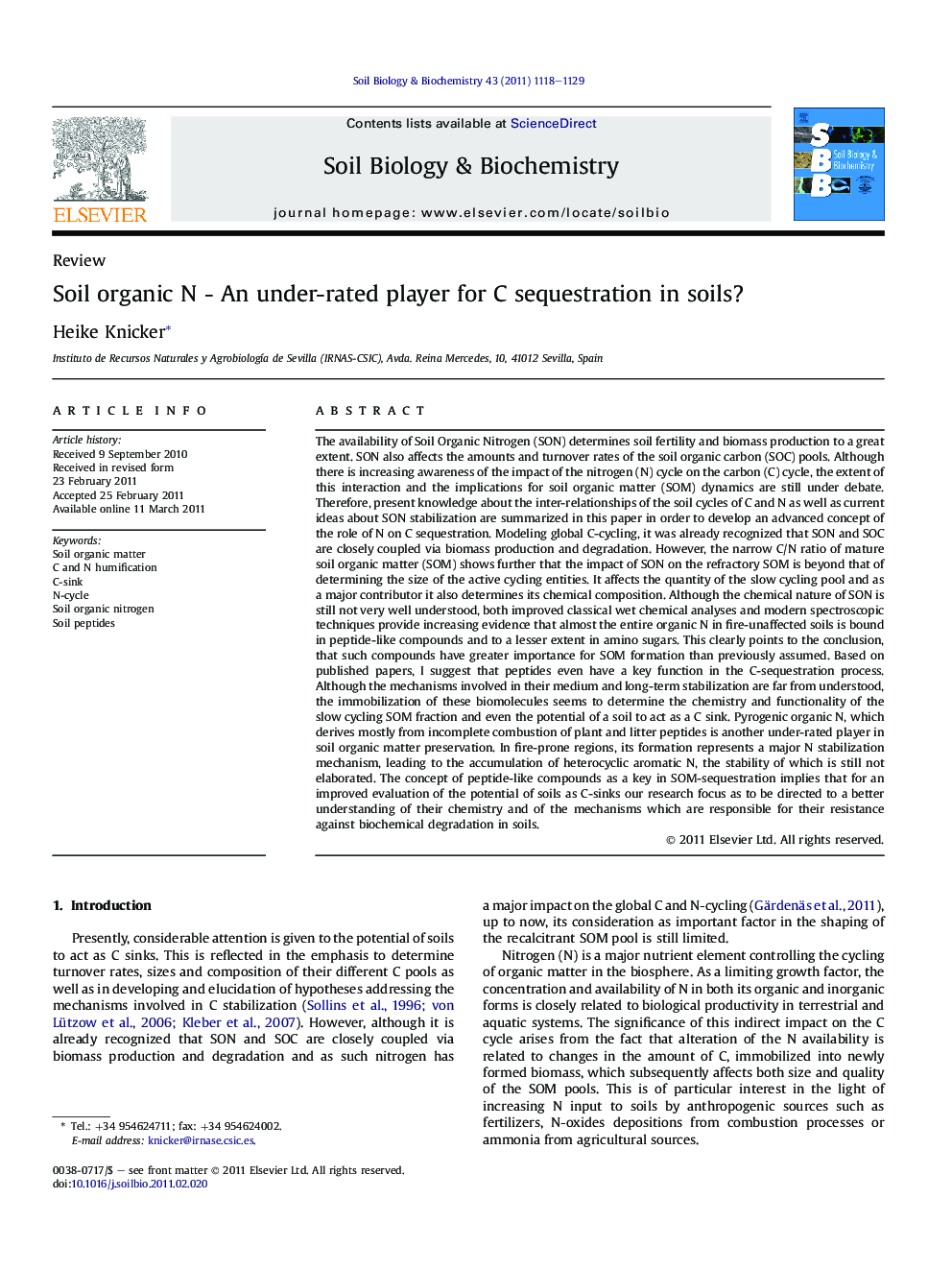| Article ID | Journal | Published Year | Pages | File Type |
|---|---|---|---|---|
| 2025287 | Soil Biology and Biochemistry | 2011 | 12 Pages |
The availability of Soil Organic Nitrogen (SON) determines soil fertility and biomass production to a great extent. SON also affects the amounts and turnover rates of the soil organic carbon (SOC) pools. Although there is increasing awareness of the impact of the nitrogen (N) cycle on the carbon (C) cycle, the extent of this interaction and the implications for soil organic matter (SOM) dynamics are still under debate. Therefore, present knowledge about the inter-relationships of the soil cycles of C and N as well as current ideas about SON stabilization are summarized in this paper in order to develop an advanced concept of the role of N on C sequestration. Modeling global C-cycling, it was already recognized that SON and SOC are closely coupled via biomass production and degradation. However, the narrow C/N ratio of mature soil organic matter (SOM) shows further that the impact of SON on the refractory SOM is beyond that of determining the size of the active cycling entities. It affects the quantity of the slow cycling pool and as a major contributor it also determines its chemical composition. Although the chemical nature of SON is still not very well understood, both improved classical wet chemical analyses and modern spectroscopic techniques provide increasing evidence that almost the entire organic N in fire-unaffected soils is bound in peptide-like compounds and to a lesser extent in amino sugars. This clearly points to the conclusion, that such compounds have greater importance for SOM formation than previously assumed. Based on published papers, I suggest that peptides even have a key function in the C-sequestration process. Although the mechanisms involved in their medium and long-term stabilization are far from understood, the immobilization of these biomolecules seems to determine the chemistry and functionality of the slow cycling SOM fraction and even the potential of a soil to act as a C sink. Pyrogenic organic N, which derives mostly from incomplete combustion of plant and litter peptides is another under-rated player in soil organic matter preservation. In fire-prone regions, its formation represents a major N stabilization mechanism, leading to the accumulation of heterocyclic aromatic N, the stability of which is still not elaborated. The concept of peptide-like compounds as a key in SOM-sequestration implies that for an improved evaluation of the potential of soils as C-sinks our research focus as to be directed to a better understanding of their chemistry and of the mechanisms which are responsible for their resistance against biochemical degradation in soils.
► The availability of Soil Organic (SON) affects the amounts and turnover rates of the soil organic carbon (SOC) pools. ► The nitrogen (N) cycle has a considerable indirect but also direct impact on the carbon (C) cycle. ► SON is a major contributor to the refractory SOM, determining not only the size of this pool but also its chemical composition. ► Peptides even have a key function in the C-sequestration process. ► In fire-prone regions, formation of “Black Nitrogen” represents a major N stabilization mechanism, leading to the accumulation of heterocyclic aromatic N.
